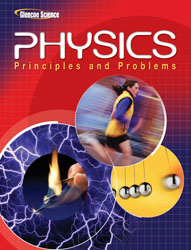1 A) toward, away from B) toward, toward C) away from, toward D) away from, away from 2 A) greater than B) equal to C) less than D) proportional to 3 -5 " to "9.0×10-5 C is in an electric field that exerts a force of 3.7×10-5 N on it. What is the magnitude of the electric field at the location of the test charge?A) 0.24 N/C B) 2.4 N/C C) 0.41 N/C D) 4.1 N/C 4 q' is represented by which of the following equations?A) E F q' B) E q ' /F q ' C) E q /ΔV D) E W /q '5 A) changes rapidly B) downward C) upward D) stationary 6 -5 C. This test charge experiences a force of 0.50 N acting at an angle of 15°. What is the magnitude of the electric field at the location of the test charge?A) 1.7×103 N/C B) 6.0×10-5 N/C C) 0.49 N/C D) 1.7×104 N/C 7 -7 C experiences a force of 0.030 N to the right in an electric field. What is the magnitude and direction of the field?A) 4.5×10-7 N/C directed to the right B) 2.0×105 N/C directed to the right C) 4.5x10-9 N/C directed to the left D) 2.0×105 N/C directed to the left 8 A) electric field B) equipotential C) potential D) capacitor 9 In the set-up of the figure below, if a drop is moving up with a constant speed, then ___.
<a onClick="window.open('/olcweb/cgi/pluginpop.cgi?it=jpg::::/sites/dl/free/0078807220/617929/ni.JPG','popWin', 'width=NaN,height=NaN,resizable,scrollbars');" href="#"><img valign="absmiddle" height="16" width="16" border="0" src="/olcweb/styles/shared/linkicons/image.gif"> (9.0K)</a> A) the lower plate must be negatively charged B) the upper plate must be negatively charged C) the gravitational force on the drop must be equal to the electric force on the drop D) the gravitational force on the drop must be less than the electric force on the drop 10 A) work done moving the test charge B) potential difference C) force on the positive test charge D) force on the negative test charge 11 A) 1.1×10-3 N/C B) 1.1×10-3 N/C C) 9.4×102 N/C D) 9.4×103 N/C 12 In the figure below, if both charges were 7.0 μC and the left charge were held in place while the right charge were moved from a separation of 0.4 m" to "0.40 m, what would be the magnitude of the difference in the electric potential energy of the system between the initial and final positions?
<a onClick="window.open('/olcweb/cgi/pluginpop.cgi?it=jpg::::/sites/dl/free/0078807220/617929/nj.JPG','popWin', 'width=NaN,height=NaN,resizable,scrollbars');" href="#"><img valign="absmiddle" height="16" width="16" border="0" src="/olcweb/styles/shared/linkicons/image.gif"> (4.0K)</a> A) 4.4 J B) 2.2 J C) 1.1 J D) 3.3 J 13 -14 N. When the electric field is 3.0×104 N/C, the drop is suspended motionless. What is the charge on the oil drop?A) 5.8×10-10 C B) 6.4×1019 C C) 6.4×10-19 C D) 5.8×10-19 C 14 A) resistance B) grounding C) static D) capacitance 15 A) 5.5 &muF; 1.3×10-5 C B) 1.2 μF; 6.1×10-5 C C) 1.2 μF; 1.3×10-5 C D) 5.5 μF; 6.1×10-5 C 16 A) 7.8×10-2 V B) 7.8×102 V C) 7.8×104 V D) 7.8×105 V 17 A) 1.07×103 V B) 1.31×103 V C) 1.31×103 V D) 1.31×100 V 18 In the figure below, if both charges were 7.0 μC and the left charge were held in place while the right charge were moved from a separation of 0.4 m" to "0.40 m, how much work would be done on the system?
<a onClick="window.open('/olcweb/cgi/pluginpop.cgi?it=jpg::::/sites/dl/free/0078807220/617929/nj.JPG','popWin', 'width=NaN,height=NaN,resizable,scrollbars');" href="#"><img valign="absmiddle" height="16" width="16" border="0" src="/olcweb/styles/shared/linkicons/image.gif"> (4.0K)</a> A) -2.2 J B) -1.1 J C) 1.1 J D) 2.2 J 19 A) 1.6×10-19 V B) 2.0×102 V C) 2.0×103 V D) 5.0×10-3 V 20 A) ohm B) volt C) joule D) coulomb 21 A) 9.0×101 N/C B) 1.1×10-4 N/C C) 9.0×103 N/C D) 9.0×102 N/C 22 A) 1.8×103 C B) 1.8×10-3 C C) 1.75×10-0 C D) 1.4×10-6 C 23 A) resistance B) current C) capacitance D) capacitor 24 In the set-up of the figure below, if the electric force up on a drop equals the gravitational force down on the drop, the drop ___.
<a onClick="window.open('/olcweb/cgi/pluginpop.cgi?it=jpg::::/sites/dl/free/0078807220/617929/ni.JPG','popWin', 'width=NaN,height=NaN,resizable,scrollbars');" href="#"><img valign="absmiddle" height="16" width="16" border="0" src="/olcweb/styles/shared/linkicons/image.gif"> (9.0K)</a> A) will accelerate up B) will accelerate down C) must be stationary D) could move upward at constant speed 25 A) remains the same B) increases C) decreases D) doubles 26 A) newtons per coulomb B) coulombs per joule C) joules per coulomb D) volts per coulomb 27 In the set-up of the figure below, if a drop is moving down with a constant speed, then ___.
<a onClick="window.open('/olcweb/cgi/pluginpop.cgi?it=jpg::::/sites/dl/free/0078807220/617929/ni.JPG','popWin', 'width=NaN,height=NaN,resizable,scrollbars');" href="#"><img valign="absmiddle" height="16" width="16" border="0" src="/olcweb/styles/shared/linkicons/image.gif"> (9.0K)</a> A) the gravitational force on the drop must be equal to the electric force on the drop B) the gravitational force on the drop must be greater than the electric force on the drop C) the lower plate must be negatively charged D) the upper plate must be negatively charged 28 A) polar B) in equilibrium C) close together D) at equipotential 29 A) 1.6×101 J B) -1.6×101 J C) 1.6×101 J/C D) 7.8×101 J 30 A) 7.7×10-5 C B) 4.5×10-5 C C) 4.5×105 C D) 7.7×105 C














